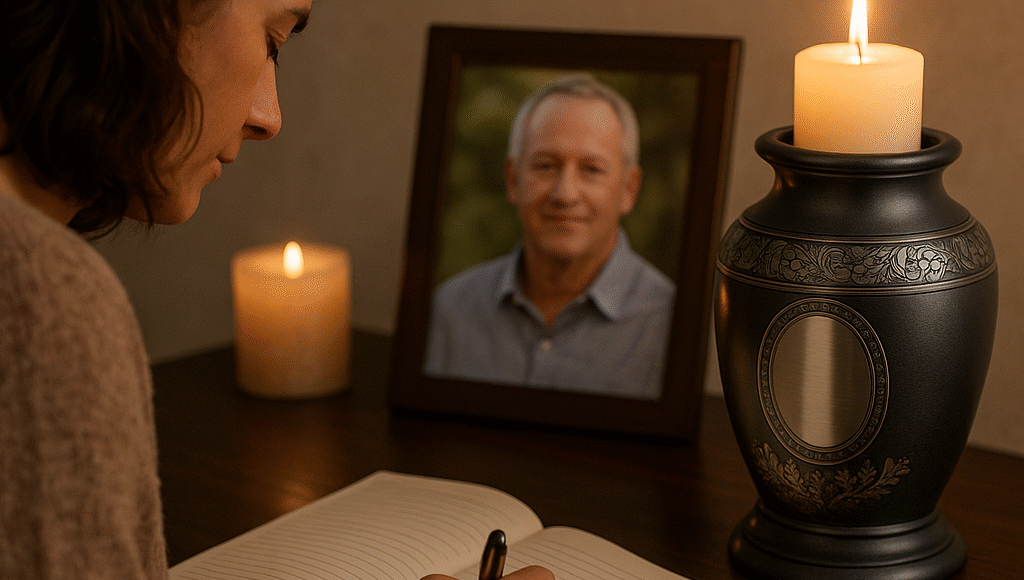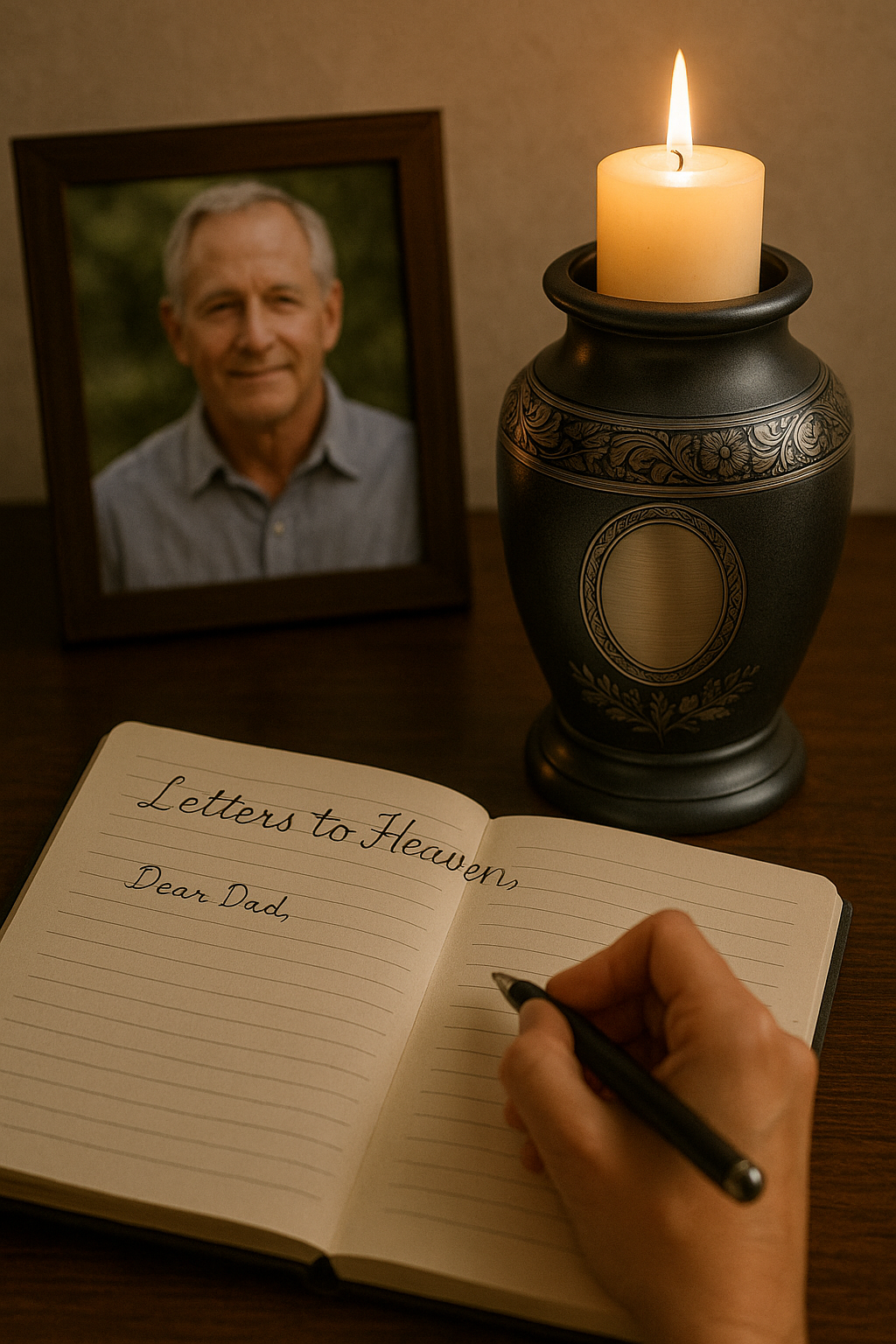Letters to Heaven Journals Are Helping Grieving Hearts Heal—Here’s Why Experts Say It Works…

Grief doesn’t come with a manual. It shows up unannounced, lingers without rules, and often leaves the heart searching for something—anything—to feel connected again. For many, the answer lies in a simple, tender ritual: writing letters to a loved one who has passed away.
Table of Contents
Called “Letters to Heaven,” this practice has quietly become a balm for broken hearts. It’s not about grammar, nor does it require literary talent. It’s about something far deeper—love, memory, and healing. And surprisingly, it’s finding its place beside a cremation urn, in homes across America.
The Unspoken Words That Need a Place to Land
When someone we love dies, we’re left with more than just memories. We’re left with unsaid goodbyes, unasked questions, and emotions that never made it to the surface. Many carry these feelings for years, unsure how to release them. Writing letters gives them somewhere to go.
Imagine this: You sit beside your loved one’s urn—a piece lovingly chosen from Dei Gratia Urns—and begin writing. “I miss you.” “I’m sorry.” “You’d be proud of me today.” With each sentence, a weight lifts. The pain becomes something you can look at. Touch. Speak to.
The Psychology Behind “Letters to Heaven”
This isn’t just poetic sentiment—it’s science-backed. Expressive writing, a form of journaling explored in psychological research, has shown real benefits. According to studies published in the Journal of Traumatic Stress and by psychologist James W. Pennebaker, writing about emotional experiences can:
- Lower cortisol levels (stress hormone)
- Improve sleep quality
- Enhance emotional regulation
- Even boost immune function
But for those grieving, the most important benefit is often emotional clarity. When you write directly to a person who has passed, you externalize emotions that may feel too big or chaotic to hold inside. The act makes grief manageable—and sometimes, surprisingly beautiful.

“You Don’t Need to Be a Writer—You Just Need to Be Honest”
One of the greatest misconceptions is that this type of writing needs to be polished. But as grief counselor and author Megan Devine says, “Grief is not a problem to be solved. It’s a presence to be honored.” Your writing honors that presence.
Some days, it may be just one line: “I miss your laugh.” Other days, you might spill four pages recalling a memory or asking questions no one else can answer. All of it matters. All of it is valid.
This is your story. Your bond. And writing keeps that bond alive, even after the final goodbye.
How to Start Your “Letters to Heaven” Practice
If you’re unsure how to begin, consider the following gentle prompts:
- “Today, I wanted to tell you about…”
- “One of my favorite memories is…”
- “I’m struggling with… but I’m trying to…”
- “Thank you for teaching me…”
- “I wish you were here for…”
These are not rules, just invitations. You might write daily, or only on anniversaries and holidays. The key is consistency, not frequency. Let your emotions decide when the page calls you.
Creating a Healing Space at Home
Many who write “Letters to Heaven” find it even more healing to create a physical memorial space. A simple corner in your home, a nightstand, or a special shelf will do. Place your loved one’s cremation urn, a photograph, perhaps a candle or keepsake, and a dedicated journal or letter box.
At Dei Gratia Urns, we often hear how families pair our elegant urns with handwritten notes, folded and tucked beneath the lid or placed in memory boxes nearby. Some read the letters aloud, others burn them to symbolically send them skyward.
The point isn’t the method—it’s the meaning.
“They May Be Gone, But Our Conversation Never Ends”
Many cultures throughout history have honored the dead through writing. In ancient Japan, the ritual of tanzaku involved writing wishes or messages to ancestors on paper and tying them to bamboo. In Mexico, Día de los Muertos brings families to cemeteries with stories, letters, and music. Writing is one of the oldest ways to connect—and reconnect—with the souls we’ve lost.
Modern-day grief doesn’t need to abandon these roots. In fact, pairing old traditions with new symbols—like a custom-designed urn—can ground us in both memory and meaning.
Your Grief Deserves a Voice
It’s okay to speak to someone who is no longer physically present. In fact, it may be one of the most healing things you ever do. Your letters won’t change the past. But they might change how you carry it.
As grief author David Kessler wrote, “Grief is love with no place to go.” Let your pen give it direction.
Let your heart speak.
